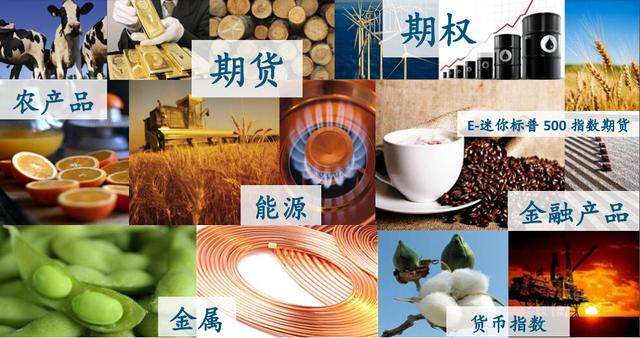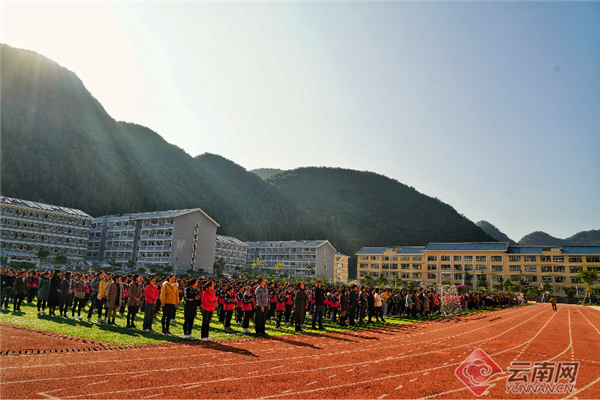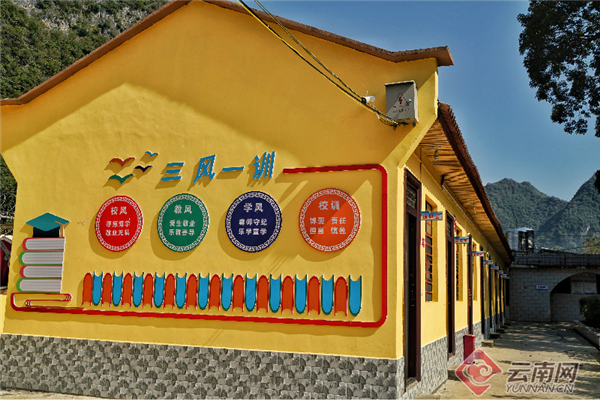If online celebrity’s beauty cosmetics want to develop sustainably, it has to enter the real stage of industrialization, specialization and capitalization competition.
Online celebrity beauty brands, which are in the limelight, will eventually return to the essence of beauty business.
According to the latest news of new york Post, after American cosmetics retailer Ulta Beauty became the exclusive cooperative retailer of Kylie Cosmetics, a reality show star, in November last year, its sales in Ulta Beauty were not satisfactory. According to Rakuten, a website that tracks online shopping, about 60% of consumers who bought Kylie Cosmetics only bought the brand once from June 2016 to May 2019, and almost all consumers who tried to buy Kylie Cosmetics products in recent months had no repurchase plan.
Rakuten, a subsidiary of the Japanese Internet service company of the same name, has 1.5 million online consumption records. However, since Rakuten did not track the physical store of Ulta Beauty, the data only reflected the online sales of Kylie Cosmetics.
Kylie Cosmetics’ revenue peaked in November 2016, the year after the first product was launched. The Kyshadow suit sold out quickly in less than 60 seconds when it debuted in August 2016. In February 2016, the lipstick set released by Kylie Cosmetics was auctioned on eBay, and even ended the auction for $225, which is almost 10 times the original price of $29.
Kylie Cosmetics helped Kylie Jenner break through $1 billion.
According to the latest statistics of Forbes, with the great success of Kylie Cosmetics, Kylie Jenner has officially surpassed the founder of Facebook to become the youngest self-made billionaire in history, with assets exceeding $1 billion and officially joining the Billionaire Club.
However, the growth rate of Kylie Cosmetics has shown signs of slowing down recently. Last year, sales only increased by 9% to $360 million. The cooperation with Ulta Beauty was originally intended to further enhance the brand’s market share, but it seems that the situation is not as expected.
On the one hand, the overall beauty market in the United States is weak. According to the data released earlier by NPD Group, the sales of cosmetics in the first quarter of the United States decreased by 4% to 1.8 billion US dollars compared with the same period of last year. Estee Lauder Group also mentioned the economic slowdown in the United States in the latest quarter.
On the other hand, there are indications that after the short-term consumption boom, Kylie Cosmetics has to face the real brand management problems. According to Rakuten data, as of November 2018, the company’s online revenue has dropped by 62%. Some analysts believe that the decline in revenue is mainly due to the inability of Kylie Cosmetics to maintain customer loyalty and the continuous loss of consumers.
Recently, some consumers have begun to complain about poor customer service, refund policy and order confusion. Some consumers reported that they spent $250 on the website to buy products, and finally only received 7 of the 12 items, while Kylie Cosmetics customer service failed to handle complaints. Kylie Jenner’s suit for her mother Kris Jenner received a lot of 1-star negative comments on Ulta official website.
According to Rakuten, Kylie Cosmetics’ star lip glaze products are still strong, accounting for 69% of its sales, and its sales performance far exceeds other categories. From June 1, 2016 to May 31, 2019, the sales of Kylie Cosmetics lip products only decreased by 2.3%, while the sales of lipstick products in the US market decreased by 5.3% in the same period. But the performance of other categories is not satisfactory. Some complaints point to product quality problems, criticizing the color development and product texture of eye shadow tray, and consumers have mixed opinions on the brand’s latest skin care product line.
The cooperation between Kylie Cosmetics and Ulta Beauty was originally intended to further enhance the brand’s market share, but it seems that the situation is not as expected.
Some critics say that online celebrity’s beauty cosmetics may just be a gust of wind, which will soon lose power. Although many online celebrity beauty brands are thriving, it is still too early to draw this conclusion. However, people are well aware that traffic and topicality cannot support the long-term development of beauty brands.
With more and more full market competition, if online celebrity beauty brands want to develop sustainably, they will eventually enter the real stage of industrialization, specialization and capitalization competition. They will not only compete with online celebrity beauty brands for market share, but also have to compete with powerful traditional beauty brands.
According to a source quoted by The Wall Street Journal, the negotiation of beauty giant Coty Group’s plan to acquire a majority stake in Kylie Cosmetics for $600 million is still going on. In order to show its importance, the transaction was personally followed up by Chairman Peter Harf. Up to now, Coty Group and Kylie Cosmetics refused to respond to the news.
As early as 2017, buyers showed interest in Kylie Cosmetics and discussed with them how to reduce the brand’s dependence on the manufacturer Seed Beauty. According to a source, the case that a friend of the Kardashian family and the founder of the beauty brand Anastasia Beverly Hills sold his personal brand equity for $3 billion in 2018 provided a commercial reference for the Kardashian family.
With the increasingly fierce market competition, as millennials and Z-generation groups began to favor niche brands with higher cost performance and social media topics, the track of online celebrity beauty brands became very crowded. Huda Beauty, a personal beauty brand launched by beauty blogger Huda Kattan in 2013, has gained a large number of fans. Especially in China, due to the development of shopping sharing community and social media, Huda Beauty’s star eye shadow tray products still set off a wave among young consumers, even though it has not officially entered China.
However, Huda Beauty has not been spared from the quality control problem. Some consumers complained that the brand’s eye shadow tray was fluorescent or allergic. Although the product was labeled with the eye shadow tray "Not recommended for eyes", the label was hard to notice.
Fenty Beauty, launched by singer Rihanna, has always been regarded as a rival of Kylie Cosmetics, and fans of both sides often even set off a battle on platforms such as Instagram. Unlike beauty brands from grassroots beauty bloggers such as Huda Kattan, Rihanna and Kylie Jenner are both celebrities and have a high appeal on social media. Kylie Jenner has 140 million followers on Instagram, while Rihanna has 73.7 million.
In 2016, KENDO, a beauty incubator under LVMH Group, invested 10 million US dollars to help Rihanna launch Fenty Beauty.
The competition between the two brands is very tight. At the beginning of this year, Fenty Beauty expanded to skin care products almost at the same time as Kylie Cosmetics, and launched skin care products such as lip balm "Pro Kissr Balm" and lip scrub, which was regarded by the industry as a signal of its strength in the skin care market. In addition, Rihanna applied to the US Patent and Trademark Office for registration of Fenty Skin trademark at the beginning of this year. The application content includes soap, skin care and personal care products.
Different from Kylie Cosmetics’ single category, Fenty Beauty is more balanced in all categories. Behind this is the difference in "hard power" of R&D and production.
Kylie Cosmetics outsourced R&D and production to Spatz Laboratories, a subsidiary of Seed Beauty Group. This supplier is a typical private brand manufacturer, which has been providing cosmetics R&D, manufacturing and packaging services for various personal brands for a long time. It has factories in Ornard, California and China. In addition to Kylie Cosmetics, Seed Beauty also manufactures another amazing internet beauty brand, Colourpop, which currently has 5.9 million fans on Instagram. However, the brand is often criticized for its product quality, which makes the market question the quality control of Seed Beauty.
It can be said that the Seed Beauty behind Kylie Cosmetics is the fast fashion in the field of beauty. As online celebrity’s economy became more and more fierce, such manufacturers began to increase. From product design to production, it can take no more than one week at most. All the work processes of private brand manufacturers have ready-made models to keep abreast of the current beauty trends.
Judging from the capital background behind the two brands, Fenty Beauty is obviously better.
In 2016, KENDO, a beauty incubator under LVMH Group, invested 10 million US dollars to help Rihanna launch Fenty Beauty. KENDO was founded in 2010 by David Suliteanu, who was the CEO of Sephora Americas. Subsequently, KENDO became a brand independent of Sephora and joined the perfume and cosmetics department of LVMH Group. KENDO’s makeup business includes Kat Von D Beauty, Marc Jacobs Beauty, Formula X Nail, OleHenriksen and Bite Beauty.
Fenty Beauty is the third largest makeup project that KENDO is responsible for. The latter plays a key role in the development of Fenty Beauty business. It can not only provide high-quality R&D talents, but also have global distribution channels, which can reach the terminal sales even in the market without Sephora and other professional makeup retailers.
At present, Fenty Beauty has taken the lead in global expansion. Earlier, Fenty Beauty announced that it would land in the Asian market in September and sell it in Seoul and Jeju Island of South Korea, as well as Hong Kong and Macau of China. The main sales channels include DFS Global Duty Free Shop, Harvey Nichols, beautyavenue and lottedfs.
Although Fenty Beauty has not announced the specific time to enter the mainland market in China, according to the current movement rhythm of the brand in China, there may be an official announcement before the end of this year at the earliest. Fenty Beauty started to open official accounts of Sina Weibo, WeChat and Xiaohongshu in May this year, and completed the authentication of FentyBeautyOfficial in WeChat official account on July 2. The brand also announced Naomi, a singer who became famous for the variety show Creation 101, as the latest spokesperson, which reflected the brand’s determination to localize to some extent.
Fenty Beauty has successively opened social media accounts in China and announced singer Naomi as the latest spokesperson.
This week, Fenty Beauty is suspected of opening an overseas flagship store in Tmall. At present, no products have been released, and the number of fans has exceeded 18,000. According to the basic information of the store, the company name of the store is KENDO HONG KONG LIMITED, which is the incubator of Fenty Beauty.
Whether from R&D and production, marketing and public relations, or channel layout, Fenty Beauty has initially possessed the ability to compete with traditional beauty brands. This will also be the inevitable development direction of online celebrity beauty cosmetics in the future. From the perspective of the global beauty market, although online celebrity Beauty has had a short-term impact on traditional beauty brands with its excellent online marketing capabilities, the advantages of online celebrity Beauty brand have been weakened as traditional beauty brands have also started to use KOL marketing strategies in large quantities. However, the traditional beauty brands have accumulated a lot in the channel layout of the global market, which makes the new online celebrity beauty brands hard to match.
In recent years, traditional beauty giants have continuously acquired emerging brands to enhance their appeal to young consumers. In the past ten years, Estee Lauder Group has successfully ranked among the top four beauty retail giants in the world by acquiring emerging brands such as Becca and Too Faced. Earlier, it was reported that Estee Lauder Group intended to bid $1 billion for the luxury beauty brand of the same name founded by celebrity makeup artist Charlotte Tilbury. The brand focuses on star products such as lipstick and eye shadow. Its current annual sales are between $150 million and $200 million, and it was supported by venture capital firm Sequoia Capital in 2017.
In fact, not only traditional beauty brands have begun to regain consumers’ attention, but even luxury brands also want to share a piece of it.
In May this year, Gucci announced that it had fully entered the beauty market, and officially launched its first lipstick series in official website, which was headed by creative director Alessandro Michele. There were 58 products in this series. Different from the main competitors such as Chanel and DIOR, Gucci didn’t set foot in the cosmetics market for the first time until 2014. It was jointly launched by former creative director Frida Giannini and legendary makeup artist Pat McGrath. The series of products, including lipstick, eye shadow and foundation, were still on sale in the market after Frida Giannini left her job, but no new products were launched in the past two years, which was gradually concealed by the limelight of emerging brands such as Charlotte Tilbury.
Li Jiaqi, a well-known beauty blogger and "king of live broadcast", recently released an evaluation video of Gucci’s new lipstick series Rouge Lvres Voile Lipstick in Sina Weibo, which attracted a lot of attention. Up to now, the video has been played 2.56 million times, with 17,645 likes, 890 reposts and 1,601 comments. According to the latest data of WeChat WeChat official account Madmen, the price of a single advertisement in Tik Tok, Li Jiaqi is as high as 950,000 yuan, which is a huge marketing budget that only a few luxury brands and beauty cosmetics giants can support.
The data shows that the price of a single advertisement in Tik Tok, Li Jiaqi is as high as 950,000 yuan.
In March of this year, the French luxury brand Hermes suddenly announced that it would fully enter the beauty market, and planned to launch beauty products on a large scale in 2020. In an interview with French media Le Monde, CEO Axel Dumas revealed that it is very necessary for brands to comprehensively lay out the cosmetics, perfume and personal care markets in order to enhance their competitiveness.
Burberry, whose performance has been sluggish in recent years, is also determined to regain its beauty business, and will take back the management right of the beauty business from Coty Group this year. After appointing Riccardo Tisici of Givenchy as the creative director at the beginning of last year, the brand has carried out a series of innovative measures, including launching a new monthly "B Series".
According to public information, in order to attract young consumers, Burberry added makeup business as early as 2010, and launched products such as lipstick, eye shadow and foundation, which were represented by Interparfums, a perfume manufacturer that had cooperated for more than 20 years, and then it was taken back in 2013 and handed over to Coty Group in 2015.
Although Burberry once thought that the annual income growth rate of its beauty business could reach 25%, and it aimed at the top ten luxury beauty brands in the world, the constant change of management rights made the brands unable to concentrate on making good products and failed to launch good product ideas and marketing strategies. Even within two years of Burberry’s own operation, the beauty business was the only sector in which the income declined.
Chanel, which has the most successful beauty business layout, spends a large amount of budget on the marketing of beauty business every year, and its product layout and promotion ideas have become more and more bold, and successively landed pop-up shop projects that young people like, such as "COCO CAFE" and "Miss COCO Game Hall". In August last year, Chanel took the lead in launching the men’s beauty series "Boy de CHANEL".
Although LVMH has never disclosed the specific sales figures of DIOR’s beauty business, industry insiders predict that the annual wholesale sales of the brand’s beauty department is about 2.5 billion euros, with perfume accounting for half, cosmetics accounting for about 30%, and skin care products accounting for about 20%. The largest markets are China, the United States, French, Japanese and British.
The specialty of beauty category is that it is highly tied to marketing, and the professionalism of products is basically linked to R&D investment. After the short-term fluctuation of beauty cosmetics in online celebrity, the market is returning to rationality. The "basic skills" of the beauty business have not changed, and the fight is still product professionalism and high-input marketing.
This means that if online celebrity beauty brands are not willing to cash out in the short term, it seems that there is only one way to rely on beauty giants.
Source: World Wide Web










































